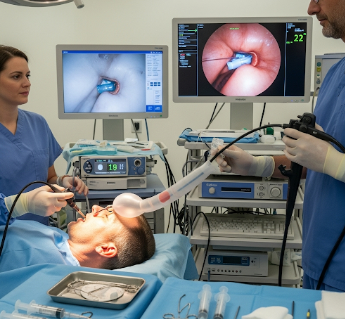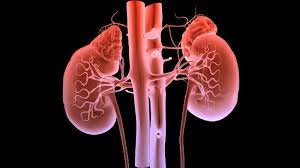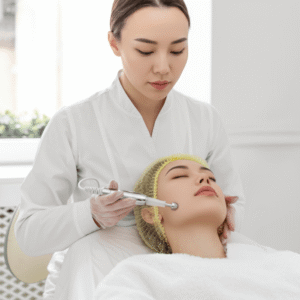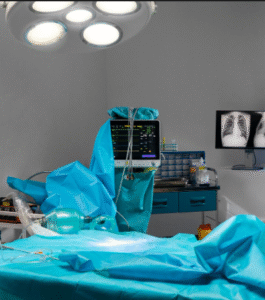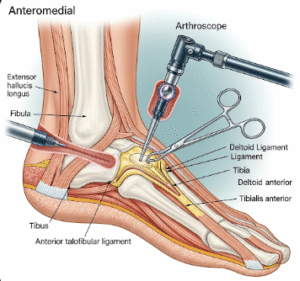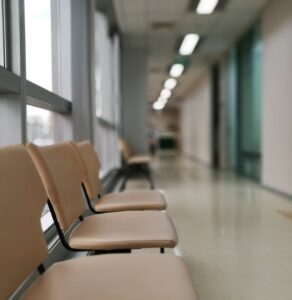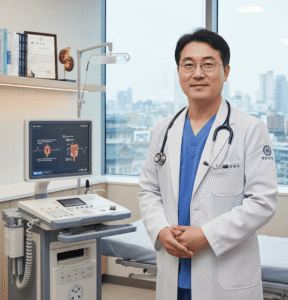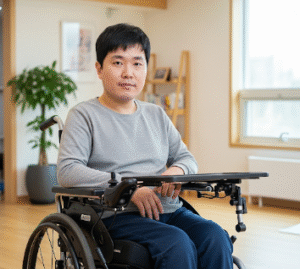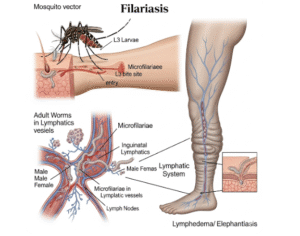Overview
Upper GI endoscopy and dilatation is a combined diagnostic and therapeutic procedure used to examine and treat narrowing (strictures) in the esophagus, stomach, or duodenum. Upper GI endoscopy allows the doctor to visualize the upper digestive tract, while dilatation involves stretching or widening the narrowed segment to relieve swallowing difficulties or obstruction.
South Korea is recognized for advanced gastrointestinal endoscopy, offering minimally invasive techniques, high-precision instruments, and experienced gastroenterologists. Patients benefit from rapid diagnosis, effective treatment, and fast recovery in top Korean hospitals.
What is Upper GI Endoscopy and Dilatation?
Upper GI endoscopy is a procedure where a thin, flexible tube with a camera (endoscope) is inserted through the mouth to examine the esophagus, stomach, and duodenum.
Dilatation is performed during endoscopy if a narrowing or stricture is detected. The process involves:
- ➤ Balloon dilatation – inflating a balloon at the site of narrowing to stretch it
- ➤ Bougie dilatation – using tapered tubes to gradually widen the esophagus
- ➤ Combined therapy – sometimes paired with stent placement for severe strictures
What are the Benefits?
✔ Relieves difficulty swallowing (dysphagia)
✔ Reduces risk of malnutrition or dehydration
✔ Minimally invasive with low complication rates
✔ Can prevent the need for more invasive surgery
✔ Fast recovery and outpatient-friendly
✔ Korean hospitals provide high-definition imaging and precise dilatation tools
Procedure Details:
1) How should I prepare for Upper GI Endoscopy and Dilatation?
- ● Fasting: No food or drink for 6–8 hours prior to the procedure
- ● Medication review: Blood thinners, diabetes medication, or anticoagulants may need adjustment
- ● Pre-procedure counseling: Patients and parents (for children) receive guidance on sedation, procedure steps, and post-procedure care
- ● Korean hospitals: Provide clear multilingual instructions and child/patient-friendly environments
2) What happens during the procedure Upper GI Endoscopy and Dilatation?
- ➤ Sedation or anesthesia: Ensures comfort and safety
- ➤ Endoscope insertion: A flexible tube is gently inserted through the mouth
- ➤ Visualization: Gastroenterologist examines the esophagus, stomach, and duodenum
- ➤ Dilatation:
- Balloon or bougie dilators are used to stretch the narrowed area
- Stents may be placed in severe cases to maintain patency
- ➤ Duration: Typically 20–45 minutes
- ➤ Korean advantage: Advanced imaging and precise dilatation techniques reduce risk and improve outcomes
3) What happens after an Upper GI Endoscopy and Dilatation?
- ● Recovery: Patient monitored until sedation wears off, usually 1–2 hours
- ● Diet: Start with clear liquids, then progress as tolerated
- ● Observation: Watch for pain, bleeding, or difficulty swallowing
- ● Follow-up: Endoscopist reviews results and may schedule repeat dilatation if needed
- ● Korean hospitals: Provide structured follow-up care and multilingual support
Risks / Benefits
✔ Benefits:
- ✦ Relief from swallowing difficulties
- ✦ Minimally invasive with fast recovery
- ✦ Can prevent or delay more invasive surgery
- ✦ Performed safely in children and adults
⚠ Possible Risks (rare):
- ➔ Mild pain or discomfort after the procedure
- ➔ Bleeding at the dilated site
- ➔ Perforation of the esophagus (rare)
- ➔ Reaction to sedation or anesthesia
- ➔ Infection, minimized with sterile technique
Recovery and Outlook
- ➤ Immediate recovery: Most patients resume normal activity and diet within 24 hours
- ➤ Follow-up: Repeat endoscopy may be needed if strictures recur
- ➤ Long-term outlook: High success rates, especially with regular monitoring and early treatment
- ➤ Korean hospitals: Offer expert endoscopists and advanced technology to ensure safe and effective treatment
When To Call the Doctor
Contact a doctor immediately if you notice:
- ⚠ Severe chest pain or difficulty swallowing after the procedure
- ⚠ Persistent vomiting or bleeding
- ⚠ Fever or signs of infection
- ⚠ Sudden shortness of breath or weakness
- ⚠ Recurrent obstruction symptoms
Best Korea Option / Process
South Korea is a top destination for upper GI endoscopy and dilatation due to:
- 🌟 Specialized gastroenterologists with pediatric and adult expertise
- 🌟 High-precision balloon and bougie dilators
- 🌟 Minimally invasive, outpatient procedures
- 🌟 Multilingual care and international patient support
- 🌟 Integrated diagnostics and follow-up care
Top Korean Hospitals for Upper GI Endoscopy and Dilatation:
- ✅ Seoul National University Hospital
- ✅ Asan Medical Center (Gastroenterology Dept.)
- ✅ Samsung Medical Center
- ✅ Severance Hospital (Yonsei University)
- ✅ Bundang CHA Hospital (Advanced GI Center)
✅ Quick Highlights Recap
- ➤ Endoscopy allows visualization; dilatation widens narrowed areas in the upper GI tract
- ➤ Minimally invasive, safe, and effective
- ➤ Fast recovery — often same day discharge
- ➤ Risks are rare and manageable
- ➤ Korea offers advanced equipment, skilled gastroenterologists, and comprehensive follow-up

